Heart disease remains a leading global cause of mortality. Often, symptoms remain subtle for years, emerging only when the condition escalates to a potentially fatal heart attack. While regular check-ups are crucial, especially for individuals with diabetes, high blood pressure, or obesity, certain skin-related signs can also indicate underlying heart issues, extending beyond typical symptoms like chest pain and breathlessness.
Here are seven skin-related indicators that, while not exclusive to heart disease, warrant attention:
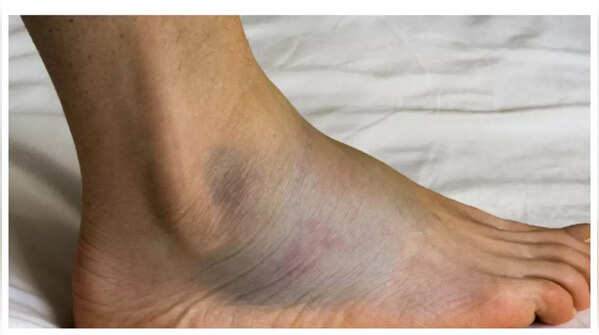
One prevalent sign of heart disease is swelling, particularly in the feet, ankles, and lower legs. This occurs when the heart's pumping efficiency declines, leading to fluid accumulation in tissues. You might observe tighter-fitting shoes or imprints on your skin after wearing socks. In severe instances, swelling can extend to the upper legs and groin. If this swelling accompanies fatigue or shortness of breath, consulting a physician is essential.
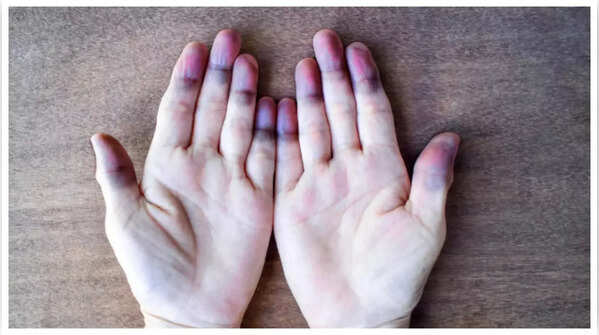
The appearance of blue or purple skin, especially on fingers or toes, that doesn't revert to its normal color upon warming may suggest insufficient oxygen delivery by the blood, indicating a struggling heart. This condition, known as cyanosis, frequently signifies a blockage in blood vessels or compromised heart function. Prompt medical intervention is critical, as oxygen deprivation can harm skin and tissues.
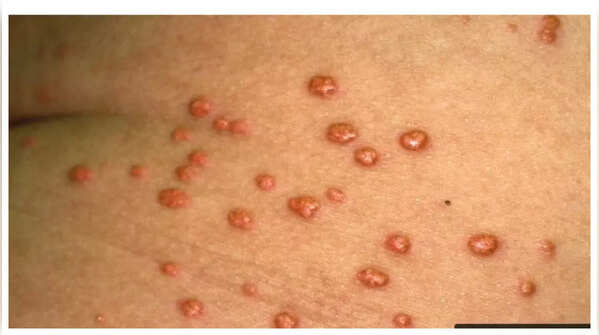
The emergence of yellow or orange waxy bumps or plaques on the skin, particularly around the corners of the eyes, elbows, knees, or the back of the legs, can signify elevated cholesterol or triglyceride levels in the blood. These painless fatty deposits serve as crucial warnings that cholesterol levels may be dangerously high, thereby increasing the risk of heart disease. If observed, cholesterol levels should be checked and managed.
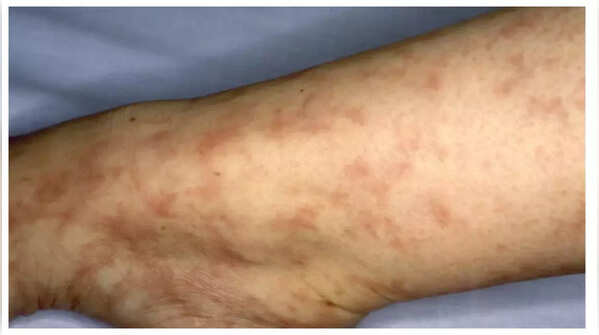
A web-like or net-like purple or blue pattern on the skin, especially on the legs, might point to cholesterol embolization syndrome. This occurs when small arteries become obstructed by cholesterol crystals, resulting in impaired blood flow. Distinct from rashes or infections, this pattern necessitates immediate medical consultation, as it may be associated with severe heart conditions.
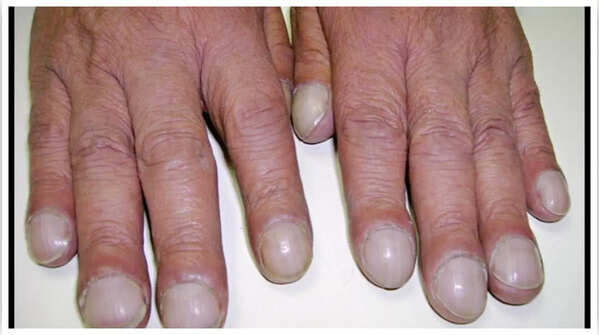
Clubbing, characterized by the rounding and swelling of the fingertips or toes, causing the nails to appear bulbous or curved downward, can indicate low blood oxygen levels, often linked to heart or lung ailments. If nail shapes change over time, seeking medical evaluation is advisable.
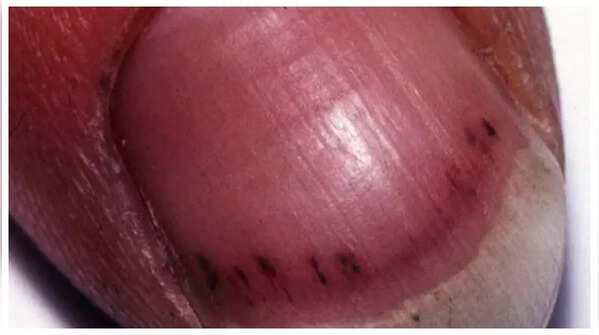
Tiny red or purple lines resembling splinters beneath the nails can signify damage to small blood vessels. These lines may indicate infective endocarditis, a serious heart infection. Lasting for several days, these lines should not be disregarded, particularly when accompanied by symptoms such as fever or fatigue.
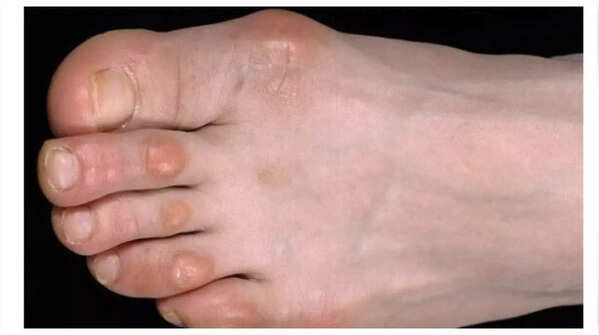
Painful, red, or purple lumps on the fingers or toes, referred to as Osler nodes, can be indicative of heart infection or other heart complications. These lumps may appear intermittently and persist for hours or days. Prompt medical attention is warranted upon noticing such painful bumps.
Sources
The American Academy of Dermatology Mohs Dermatology
Disclaimer: This article is intended for informational purposes only and does not substitute professional medical advice. Always seek the counsel of a qualified healthcare provider for any health concerns.
Newer articles
Older articles
 Team India Settles in Birmingham: Rahul's Mattress, Coaches' Strolls, and the Enduring Coffee Ritual
Team India Settles in Birmingham: Rahul's Mattress, Coaches' Strolls, and the Enduring Coffee Ritual
 Android Users Urged to Patch Devices Immediately Following Critical Security Flaws Alert
Android Users Urged to Patch Devices Immediately Following Critical Security Flaws Alert
 Ashada Gupt Navratri 2025: Dates, Auspicious Timings, and Esoteric Significance Explained
Ashada Gupt Navratri 2025: Dates, Auspicious Timings, and Esoteric Significance Explained
 JPG to PDF: A Graphic Designer's Guide to Conversion & Best Practices
JPG to PDF: A Graphic Designer's Guide to Conversion & Best Practices
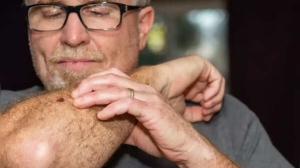 Skin Cancer Alert: How to Identify Suspicious Moles and Early Warning Signs
Skin Cancer Alert: How to Identify Suspicious Moles and Early Warning Signs
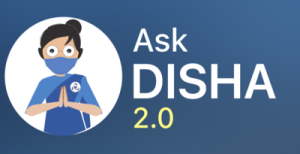 IRCTC's AskDisha 2.0: AI Chatbot Streamlines Train Ticket Booking, Refunds, and Travel Information
IRCTC's AskDisha 2.0: AI Chatbot Streamlines Train Ticket Booking, Refunds, and Travel Information
 The stat that could swing every NBA team's 2025-26 season
The stat that could swing every NBA team's 2025-26 season
 Bollywood's Mythological Muse: How Indian Epics Inspire Cinematic Storytelling
Bollywood's Mythological Muse: How Indian Epics Inspire Cinematic Storytelling
 Bollywood Flashback: Jackie Shroff Accused of Untoward Advance on Young Tabu at Danny Denzongpa's Party
Bollywood Flashback: Jackie Shroff Accused of Untoward Advance on Young Tabu at Danny Denzongpa's Party
 Popular Finance YouTuber's Account Hacked: Bitcoin Scam Alert and Security Tips
Popular Finance YouTuber's Account Hacked: Bitcoin Scam Alert and Security Tips